Issue #95, Volume #2


How The Pros Tilt The Odds In Their Favor
This is Porter’s Daily Journal, a free e-letter from Porter & Co. that provides unfiltered insights on markets, the economy, and life to help readers become better investors. It includes weekday editions and two weekend editions… and is free to all subscribers.
| Learning about trading, the hard way… Sharing lessons from years of mistakes… The system that is rigged in your favor… The Trading Club is off to a great start… Consumers pay the tariffs… |
It’s amazing what you can learn from 20 years of mistakes.
I (Ross Hendricks) opened my first brokerage account in the summer of 2006. I had just started my first official job, working as a summer intern for Anadarko Petroleum, now part of Occidental Petroleum (OXY). During lunch, I’d meet up with a fellow intern to talk stocks.
Neither one of us was interested in getting rich slowly with the blue chips. Filled with youthful enthusiasm, we went looking for the high octane trades that could double or triple our money in no time. Like moths to the flame, we were drawn into the most actively traded stocks that were jumping around by 10% to 20% each day.
You can guess how this story ends…
A few lucky trades boosted our confidence, creating the illusion that we knew what we were doing. But it didn’t take long for the losses to mount as we waded into the cesspool of thinly traded penny stocks, including falling prey to a classic pump-and-dump scheme. Before long, I had surrendered the majority of my summer savings toward an expensive tuition bill to Mr. Market.
Of course, we had no one to blame but ourselves.
We treated the market like a casino, and we were the suckers at the table. And as much as I’d like to say I learned my lesson after that summer, it was just the beginning of my education. Over the first decade of my investing career, I estimate that my tuition bill ultimately ran into six figures.
But in hindsight, it was worth every penny. Those hard-won lessons of the last 20 years have now been distilled down into a handful of proven strategies for market-beating returns, which I’ll share with you today.
These are the same strategies I’ve used to compound capital at 60% annually since November 2023 when I opened an account dedicated to tracking this systematic approach:
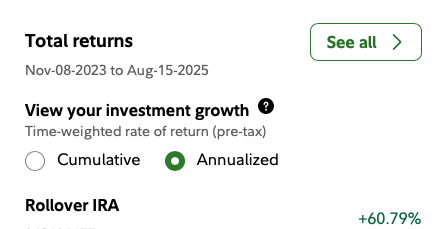
They’re the same techniques that starting in May of 2024, I taught my own mother, a retired and risk-averse 67 year old, who was previously earning a paltry 4% to 5% in money market funds. Since she began using this investing framework, she’s boosted her annual income into double-digit territory, while trouncing the S&P 500 on a total return basis.
And on May 30, we launched The Trading Club to show subscribers exactly how these strategies work using a live $100,000 trading account. We detail every move we make in advance, giving subscribers a full day to act on our trades ahead of us. As of last Friday, August 15, we’re up 9.7% to $109,705 in the first 77 days, or a 55% annualized rate of return, with relatively low volatility along the way:
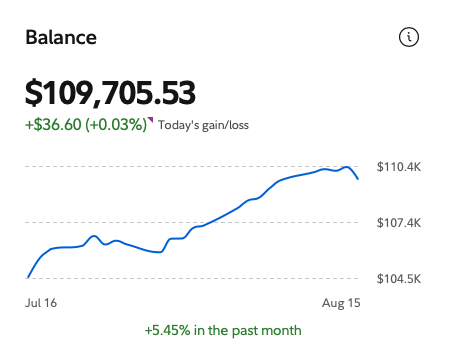
Now here’s the thing…
As much as we’d like to take credit for exceptional brilliance in earning these returns, the truth is far less flattering: we’re simply participating in a rigged game where the odds are stacked in our favor. And we’re happy to admit that, because it doesn’t change the fact that the profits will continue flowing into our brokerage account… and could for you as well.
The Casino That’s Rigged For You
Early in my investing career, I thought the key to high returns was outsmarting the market by “buying low and selling high.” But over time, I learned that the world’s best investors don’t chase the market, they let it come to them. Even better if you can get paid while you wait.
That’s the crux of our core investing approach in The Trading Club. With the majority of our capital, we’re tapping into what we call the only “can’t lose” proposition offered on Wall Street. That is, the ability to routinely place trades that result in one of two favorable outcomes:
- Buy the world’s best businesses at discounted future prices, or
- Earn consistent income at a rate of roughly 20% to 30% (or higher) annualized returns
Each day, the options market provides this opportunity on thousands of individual securities.
Yes, the dreaded “O” word! Options.
The mere mention of it will surely turn off at least half of the audience.
And that’s a shame, because professional investors use this $137 billion asset class every day to gain a significant edge in the market. This includes legends like Carl Icahn, Bill Gross, and Warren Buffett – who, through his conglomerate Berkshire Hathaway, has at various times in history been one of the largest individual option sellers in the market.
Buffett’s love for option selling should come as no surprise, because it’s just another form of the world’s best business model: insurance.
Insurance, With A Twist
Options are essentially insurance for the stock market, designed to protect against downside risk in share prices. Option sellers get paid upfront cash premiums for providing this insurance against falling stock prices to other investors. In the meantime, they can use the premiums they earn to reinvest in additional securities – effectively engineering a source of “float” from the financial markets.
But there’s one key advantage of selling options versus traditional insurance. For insurance companies, the downside is paying out claims on impaired assets, like a wrecked car or burned-down home. For option sellers who do a good job of underwriting risks on high-quality stocks, the downside is owning a piece of a world-class asset at a discounted future price.
Thus, on the one hand, option sellers have the chance to collect steady income if the stocks they insure against move higher in price. And if prices fall, the “downside” is buying those stocks at attractive prices. It’s the ultimate rigged game, and thus it’s no surprise why guys like Buffett and Icahn love to play it.
During the depths of the Global Financial Crisis, when investors scrambled for insurance that sent option prices sky-rocketing, Buffett went on one of the greatest option selling sprees of all time. By the time the dust settled, Berkshire Hathaway had sold $37 billion worth of put options on various stock market indexes around the world – a move that has paid off handsomely in the years since, and continues paying off to this day.
The good news: you don’t need Buffett’s brains to win at this game. Sure, there’s a learning curve involved. But if my own mother can learn these strategies and use them to beat the market – a retiree with zero trading experience – then so can you.
And that’s our mission with The Trading Club: to show everyday investors the simple strategies that professionals use to boost their returns, without taking excessive risks along the way. Our bread-and-butter money maker is a simple, but powerful strategy of selling cash secured puts for one of two outcomes: to enter into long positions we want to own, or generate high rates of income over time.
If you’re completely new to selling put options, we previously wrote a step-by-step guide using an example in Viper Energy (VNOM) here. We won’t rehash the details again. Instead, we simply want to show you what’s possible with this basic options strategy.
The Secret To A 100% Win Rate
Since launching the service on May 30, we’ve sold 13 put options. Our current win rate across all trades is 100%. How is this possible? Well, it all comes down to a strict process for underwriting risk.
We focus primarily on the classic “forever stocks” that Porter has written about during his entire career. These are companies with high capital efficiency, impenetrable competitive moats, and dominant positions in their industry. Examples of our put-selling candidates to date include iconic companies like The Hershey Company (HSY), PepsiCo (PEP), Nike (NKE), and Philip Morris International (PM). Stocks with business models so powerful and enduring that their future success is not only likely, but inevitable.
We will only sell puts on these stocks when they trade at reasonable valuations. That way, we’re happy to own these stocks at their current prices if the options expire “in the money” and thus trigger a long position – called an options “assignment”.
Finally, we control risk by only selling cash-secured puts, meaning our broker sets aside enough cash to make good on the purchase commitment of each contract for the duration of the trade. This way we’ll never find ourselves in a position of writing insurance for which we don’t have the cash reserves to “pay out” on a claim (i.e,, purchase the stock for which we’ve sold insurance on).
Our ultimate goal: grow this account to $1 million and bring Trading Club members along for the ride, showing them every move we make and why.
If you missed the first round of gains, don’t worry… we’ve only just begun. We’ve got a long way to go before we hit $1 million. And we’ll release the next series of trades later this week, including a video where we walk you through each trade we place in our live account.
We will have more on The Trading Club in Wednesday’s Daily Journal.
Click here to join the waitlist. In the meantime, let us know what you think at [email protected]
THIS IS NOT A DRILL: Watch This Video
🚨For a limited time, you can learn how to get pre-IPO exposure as Elon Musk commences his next trillion-dollar venture. And you can do it with any brokerage account.
Get the details completely free. NO purchase necessary, no strings required. The only catch is this video could go “dark” at any time.
But for the best shot at big gains, you have to get in ASAP — before it goes public, and before everyone drives up the price. CLICK HERE!
Three Things To Know Before We Go…
1. Consumers are about to start paying for tariffs. As of June, U.S. businesses were absorbing about 64% of tariff costs. But that’s changing. Beginning in October, Goldman Sachs estimates that U.S. consumers will fork over 67% of tariff costs – meaning prices are going to rise and household budgets will be taxed.
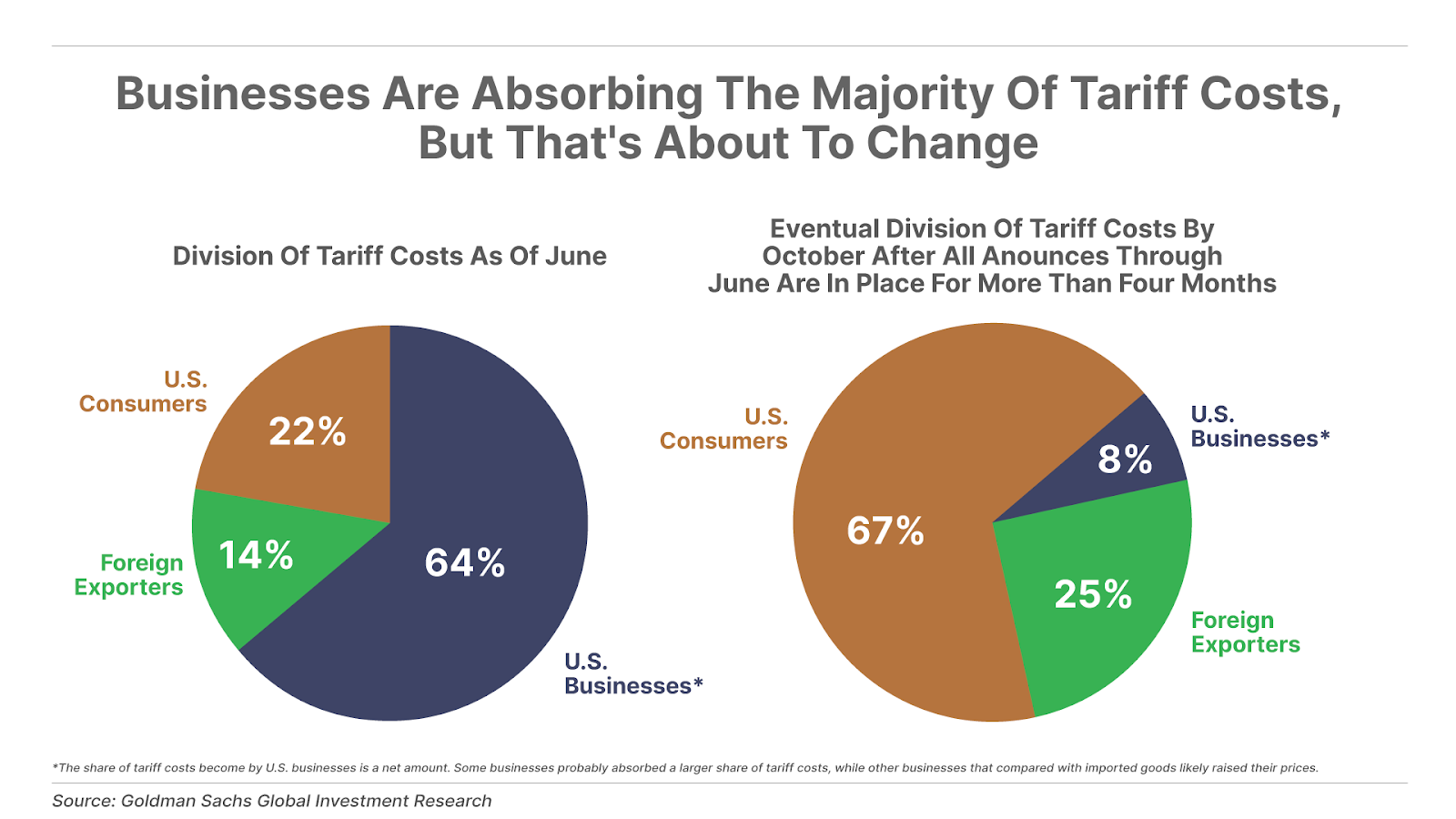
2. Private equity is selling to itself. Nearly 20% of private equity “exits” are continuation deals – moving a portfolio company from one fund to another within the same firm to book a sale on paper while not letting go of the asset. Some are even doubling up: Accel-KKR just raised $1.9 billion for a second continuation vehicle to extend its ownership of a human-resources software firm, with CapVest and PAI Partners following suit. Private equity distributions have plunged to 7%, well below the 25% average from 2015 to 2019 – a red flag that liquidity is drying up, buyers are scarce, and the eventual fallout could be brutal.
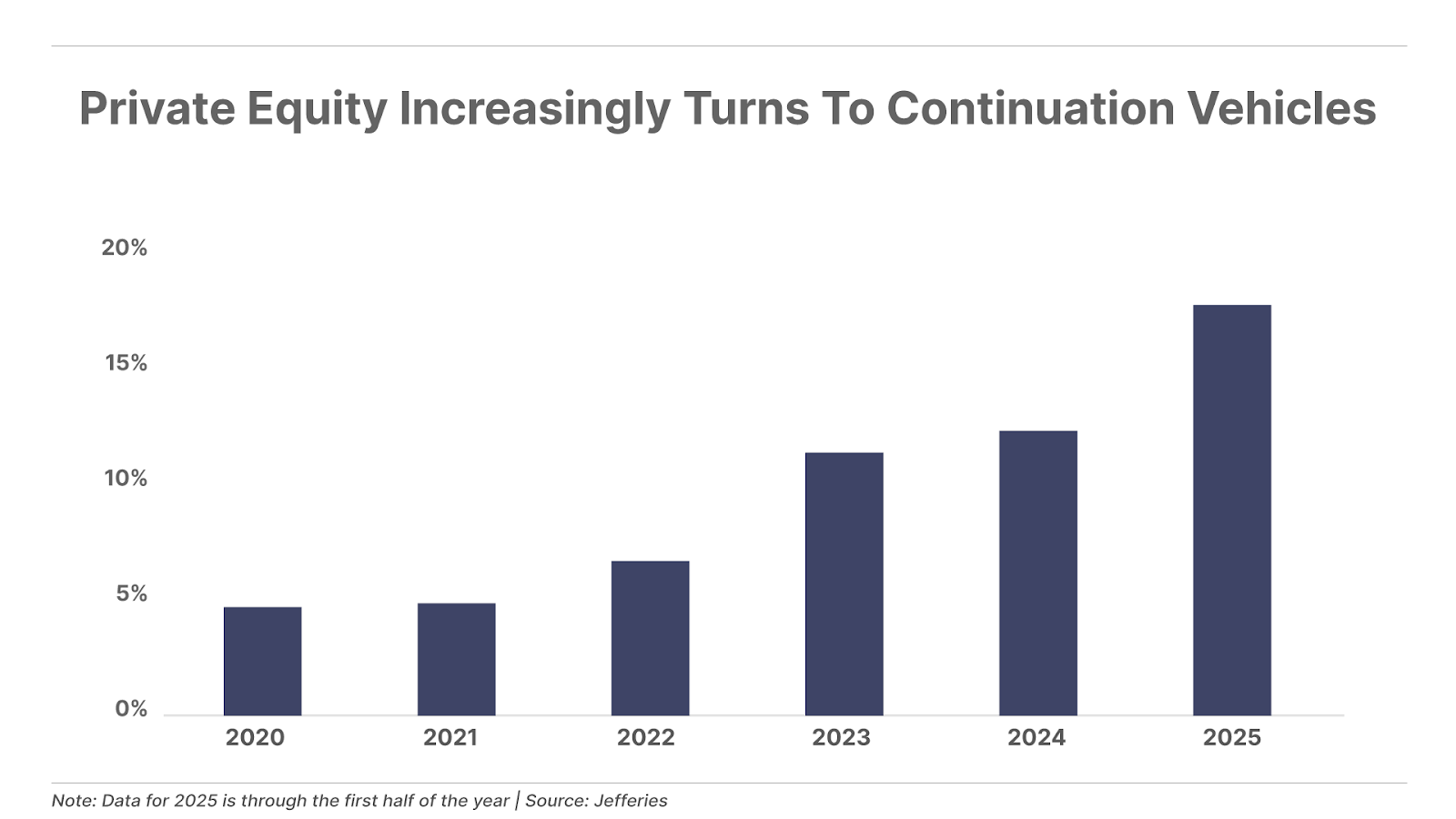
3. Stripper Indicator flashes red. Shares of RCI Hospitality (RICK) – the owner and operator of some of the most popular adult-entertainment nightclubs – make up what is known as the Stipper Index – when business slows at RCI clubs, it signals that discretionary spending is tightening, offering an “honest” glimpse of how people are spending their money. Last week, RCI reported earnings of $0.77 per share, missing Wall Street’s estimate by 38% and marking a steep 43% decline compared with the same period last year.
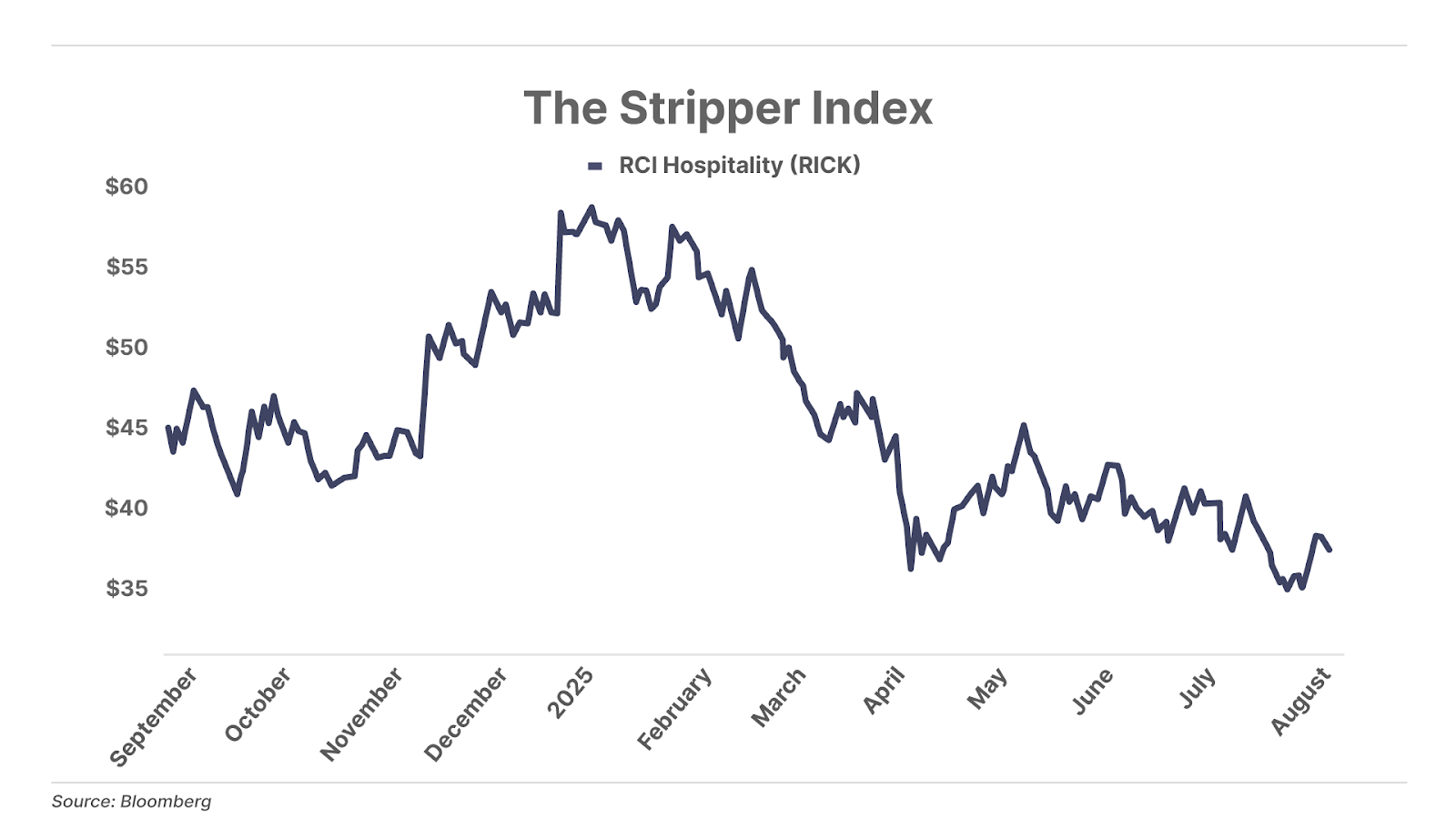
Good investing,
Ross Hendricks
Houston, Texas

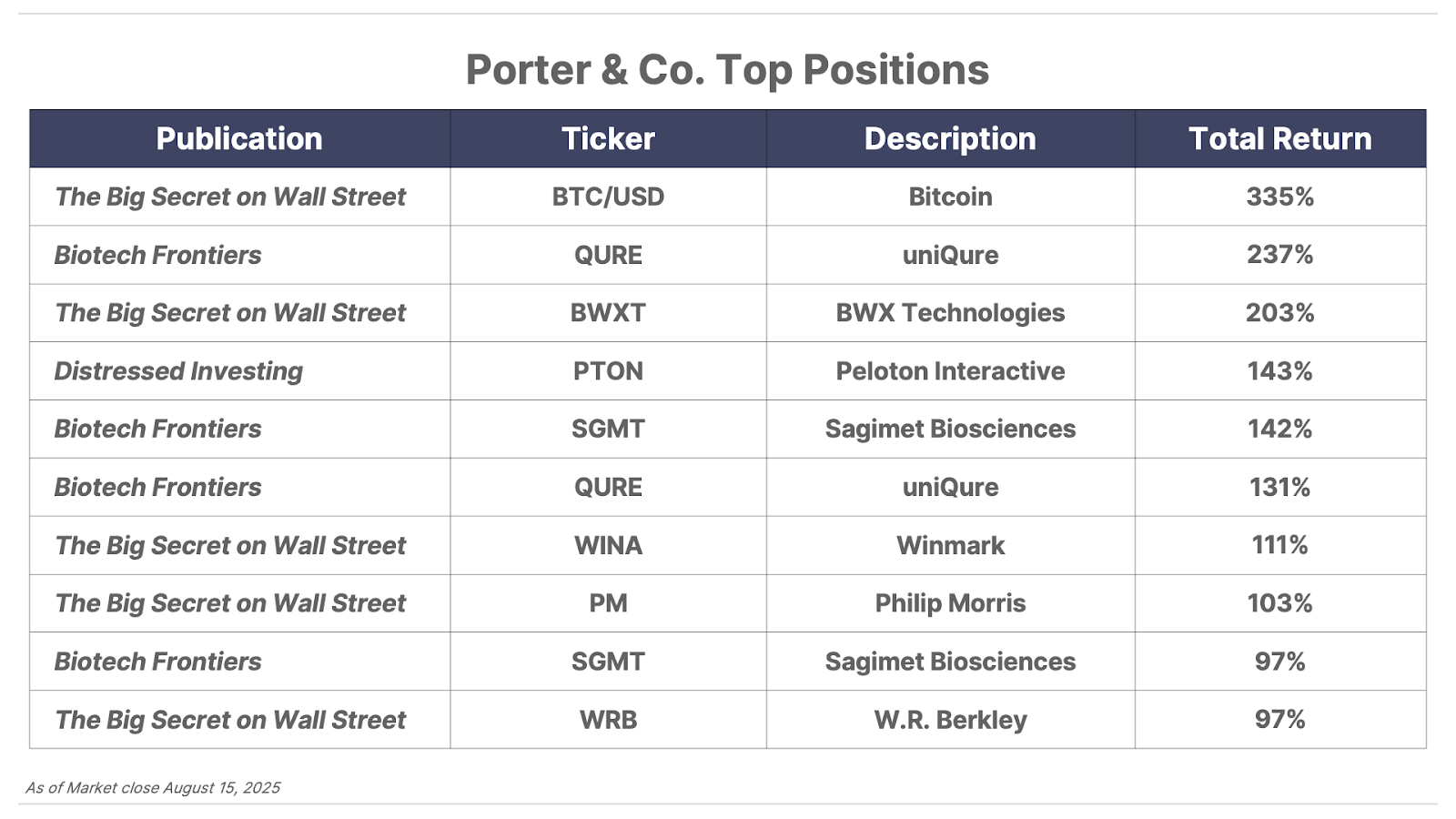
Please note: The investments in our “Porter & Co. Top Positions” should not be considered current recommendations. These positions are the best performers across our publications – and the securities listed may (or may not) be above the current buy-up-to price. To learn more, visit the current portfolio page of the relevant service, here. To gain access or to learn more about our current portfolios, call Lance James, our Director of Customer Care, at 888-610-8895 or internationally at +1 443-815-4447.
